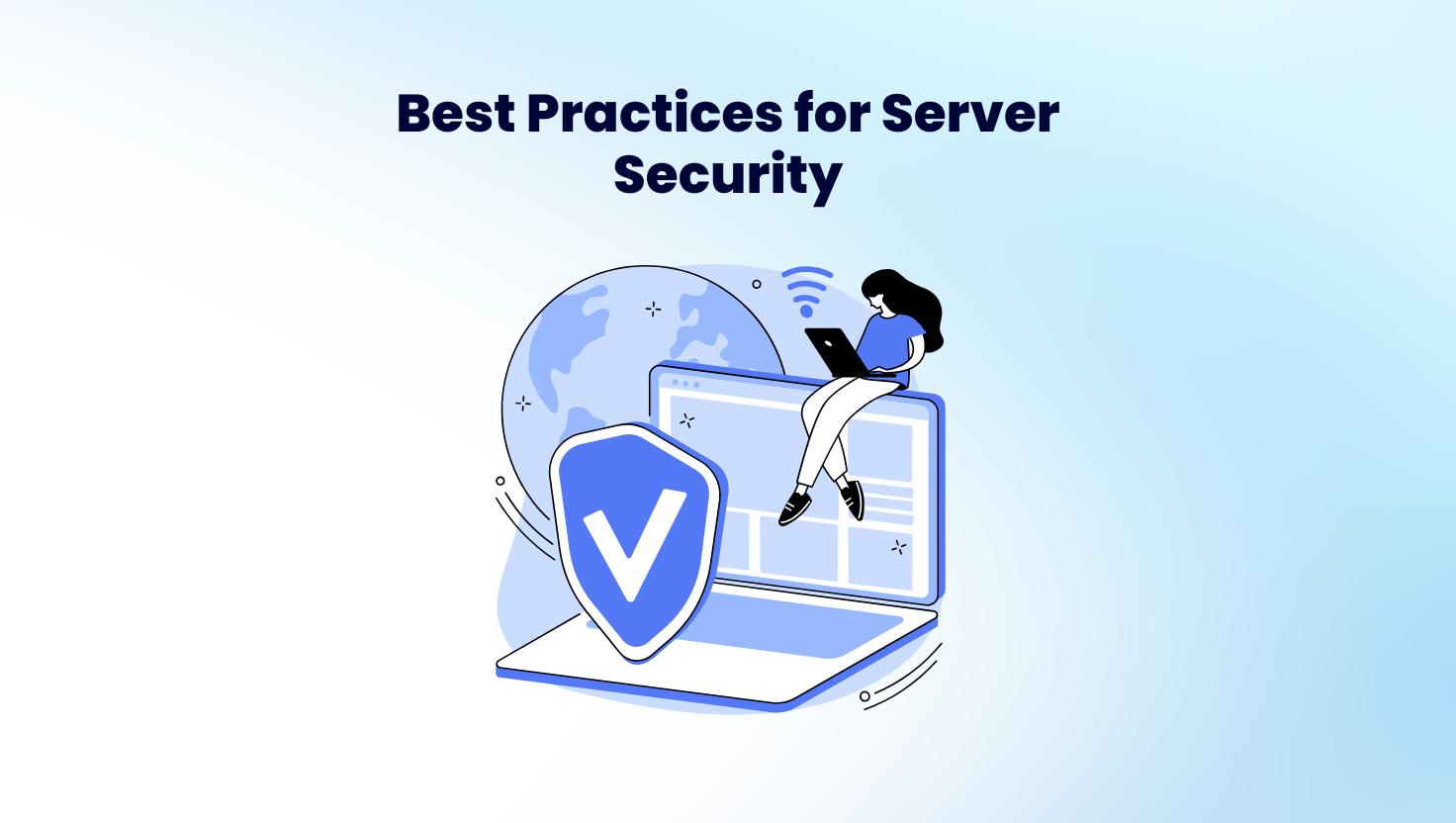
19 Mar Server Security Best Practices to Protect Your Data
Ensuring server security is crucial for business continuity, data protection, and regulatory compliance. A compromised server can lead to data breaches, financial losses, reputational damage, and operational disruptions. With increasing cyber threats, businesses must implement robust security measures to safeguard their infrastructure against unauthorized access, malware, and other vulnerabilities.
This article outlines key server security best practices, from configuring access controls and encryption to implementing firewalls and regular monitoring. By following these guidelines, businesses can minimize risks, improve security posture, and maintain operational integrity.
Understanding Server Security Risks
Before diving into security strategies, it is essential to recognize common threats that servers face:
1. Unauthorized Access
Attackers exploit weak credentials or misconfigured settings to gain unauthorized control over servers.
2. Distributed Denial-of-Service (DDoS) Attacks
Cybercriminals flood a server with excessive traffic, causing disruptions and downtime.
3. Malware and Ransomware
Malicious software can steal, corrupt, or encrypt critical business data, rendering it inaccessible.
4. Data Breaches
Unsecured servers expose sensitive customer and business information, leading to compliance violations and financial penalties.
5. Vulnerabilities in Outdated Software
Running outdated operating systems or applications increases the risk of exploitation by hackers.
By addressing these threats proactively, businesses can prevent potential security breaches.
Best Practices for Securing Your Server
1. Keep Software and Operating Systems Updated
Security vulnerabilities often stem from outdated software. To reduce risks:
- Regularly apply patches and updates for the operating system and applications.
- Enable automatic updates where possible.
- Use long-term support (LTS) versions for better security and stability.
2. Strengthen Authentication and Access Controls
Unauthorized access is one of the biggest security risks. Improve access security by:
- Enforcing strong, unique passwords and multi-factor authentication (MFA).
- Restricting administrative access to essential personnel only.
- Implementing role-based access control (RBAC) for better user permissions management.
- Disabling default accounts and changing default login credentials.
3. Secure Remote Access
For businesses that require remote server access, it must be properly secured:
- Use SSH keys instead of passwords for authentication.
- Restrict SSH access to specific IP addresses using firewall rules.
- Change the default SSH port (22) to a non-standard port.
- Implement Virtual Private Networks (VPNs) for encrypted remote access.
4. Configure Firewalls and Intrusion Detection Systems (IDS)
A firewall acts as a security barrier that filters unauthorized traffic, while an Intrusion Detection System (IDS) monitors for suspicious activity.
- Configure firewall rules to allow only necessary traffic.
- Deploy Fail2Ban or DenyHosts to prevent brute-force attacks.
- Monitor server logs for signs of unauthorized access.
5. Encrypt Data Transmission
All sensitive data should be encrypted to prevent interception:
- Use SSL/TLS certificates to secure website traffic.
- Enforce HTTPS for all web-based applications.
- Encrypt database connections with SSL.
- Enable end-to-end encryption for sensitive data exchange.
6. Implement Automated Backups
Having secure backups helps recover data in case of a breach or failure:
- Schedule regular automated backups for critical data.
- Store backups in a secure, offsite location or cloud storage.
- Encrypt backup files to prevent unauthorized access.
- Test backup restoration processes regularly.
7. Monitor Server Activity and Logs
Continuous monitoring helps detect unusual activity before it escalates:
- Use log management tools like Graylog, ELK Stack, or Splunk.
- Set up alerts for security anomalies (e.g., multiple failed login attempts).
- Review server logs frequently for suspicious patterns.
8. Minimize Installed Software and Services
Only install the necessary applications and services to reduce the attack surface:
- Remove unnecessary software to eliminate vulnerabilities.
- Use containerization (Docker, Kubernetes) to isolate applications securely.
- Conduct periodic security audits to identify redundant software.
9. Implement DDoS Protection Measures
A DDoS attack can overwhelm a server and cause downtime. To mitigate risks:
- Use DDoS mitigation services like Cloudflare, AWS Shield, or Akamai.
- Set up rate limiting to prevent excessive requests.
- Monitor traffic patterns to identify anomalies.
10. Maintain Compliance with Security Standards
Many industries require businesses to comply with security regulations:
- GDPR (General Data Protection Regulation) for data privacy.
- ISO 27001 for information security management.
- HIPAA (Health Insurance Portability and Accountability Act) for healthcare security.
- PCI-DSS for online payment security.
Following these standards ensures regulatory compliance and data protection.
How PT. KDN Can Help Secure Your Server
At PT. KDN, we provide comprehensive server security solutions that help businesses:
- Prevent cyber threats with proactive security measures.
- Monitor and detect vulnerabilities before they become threats.
- Implement firewalls, encryption, and access controls for data protection.
- Automate backups and disaster recovery plans to minimize downtime.


Sorry, the comment form is closed at this time.